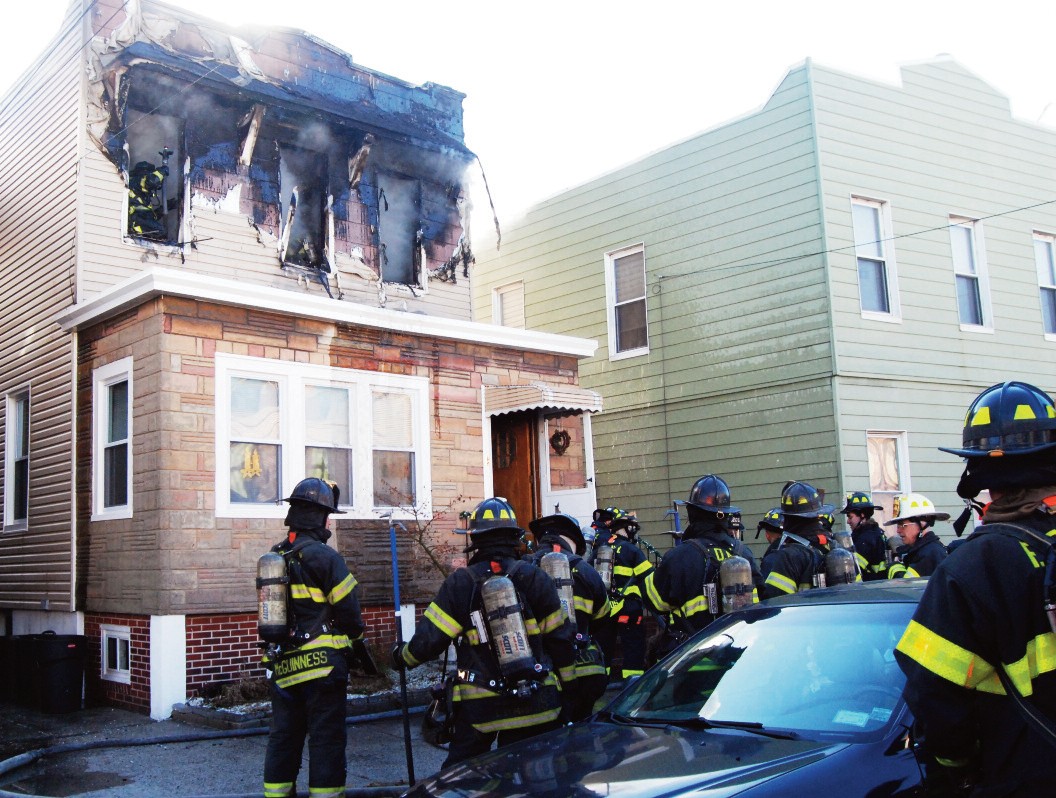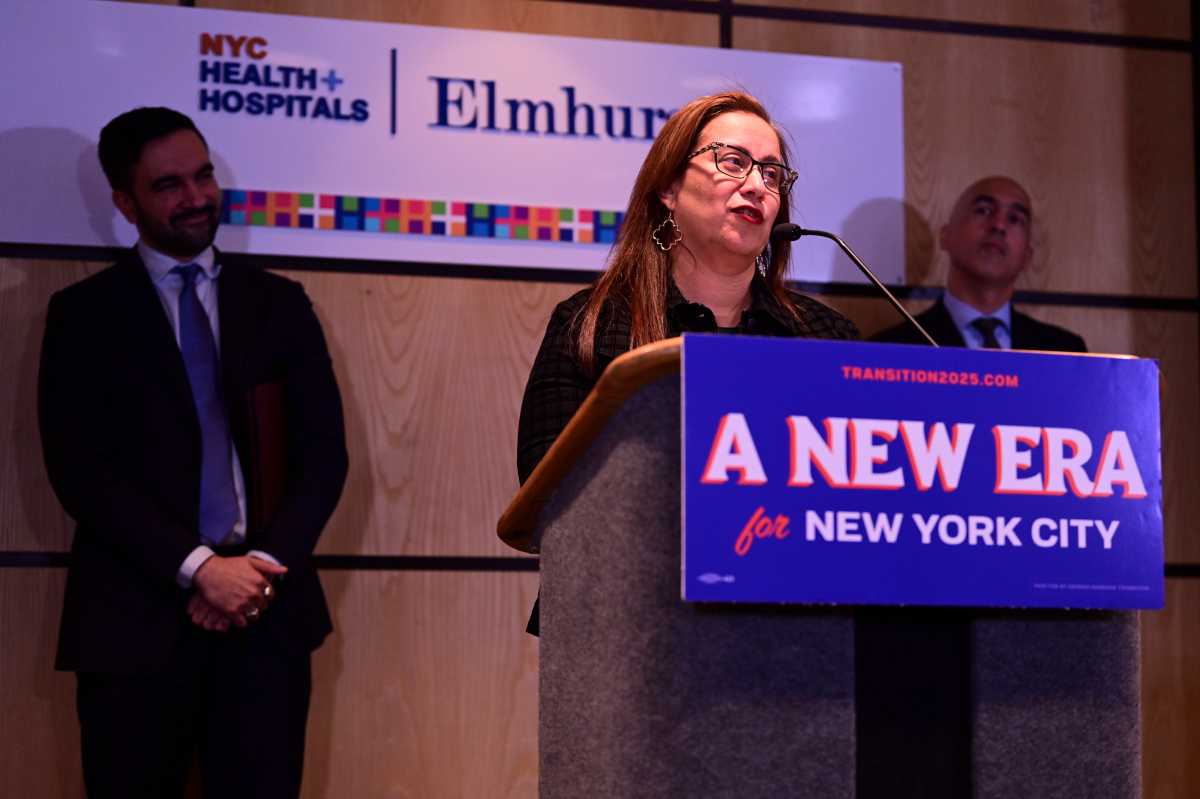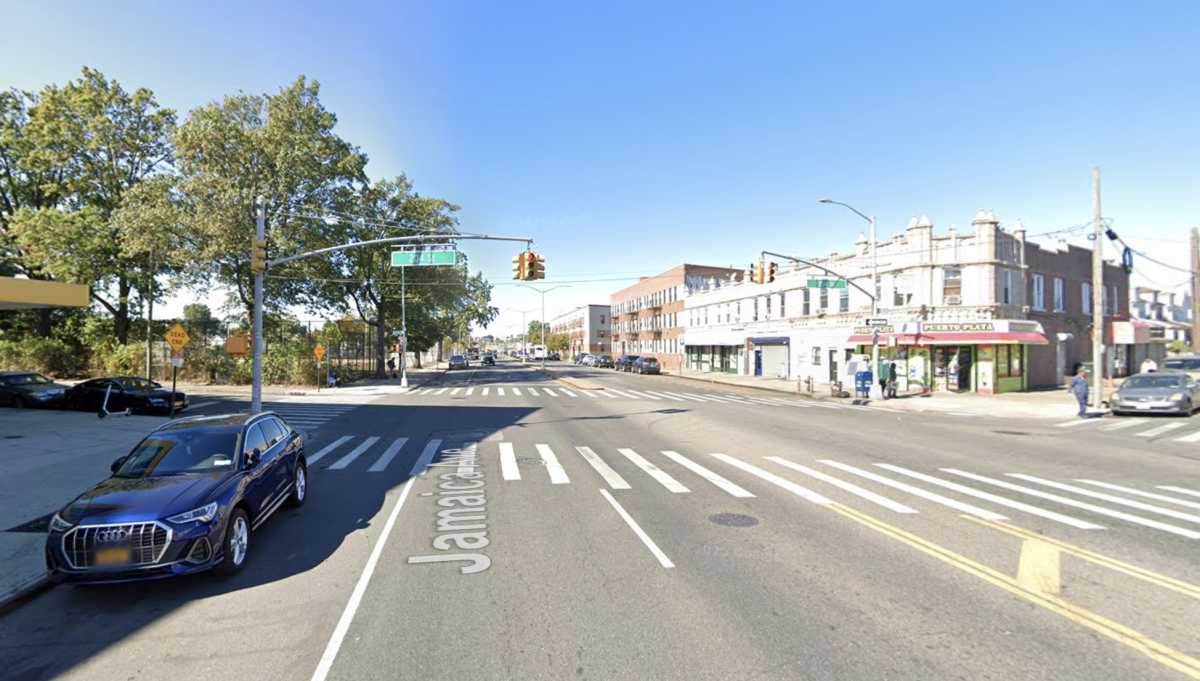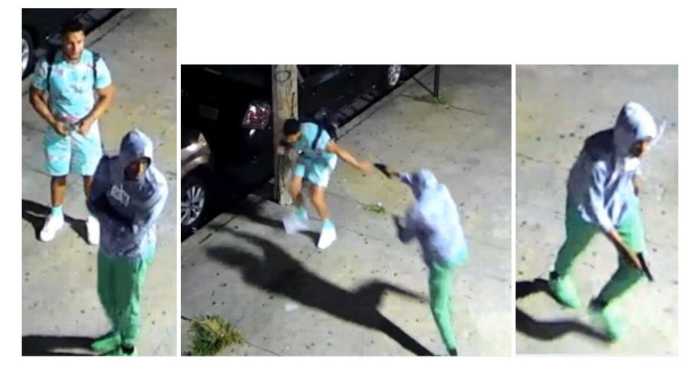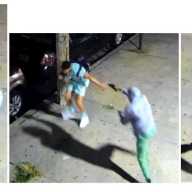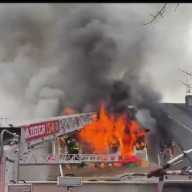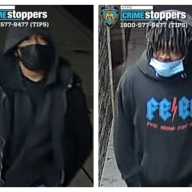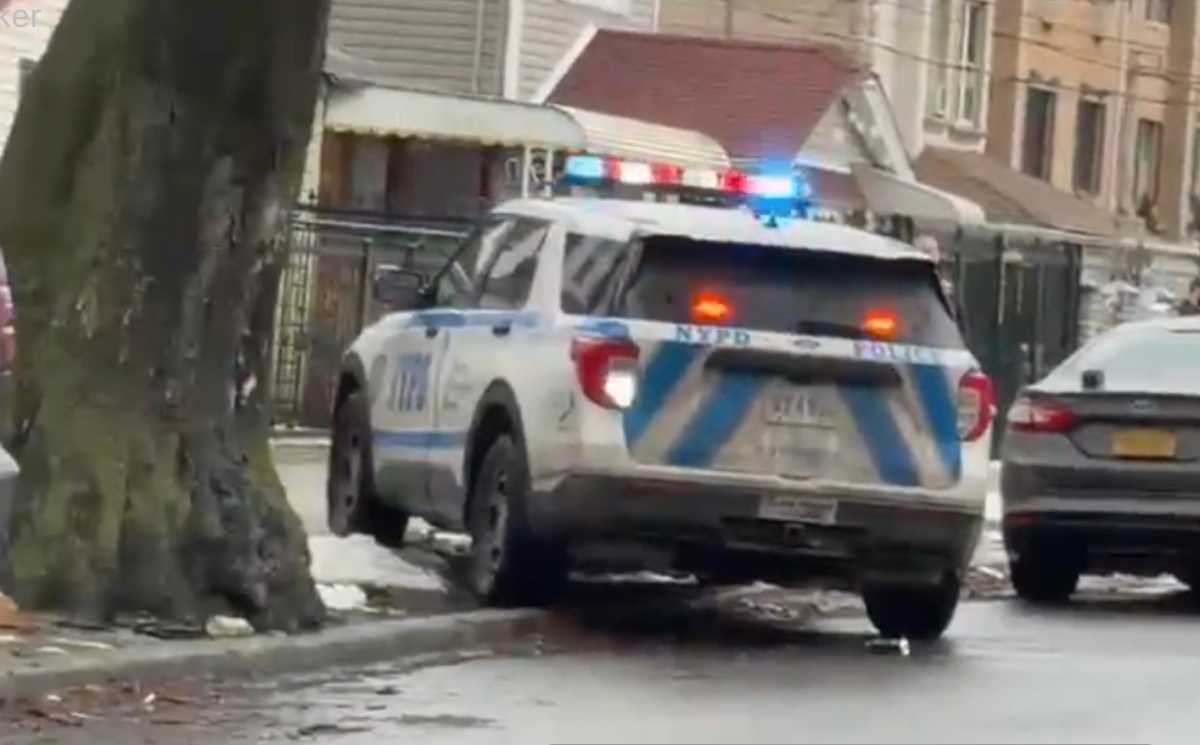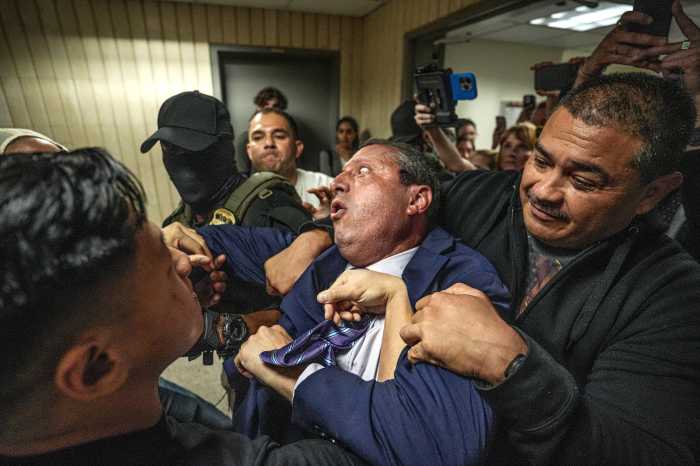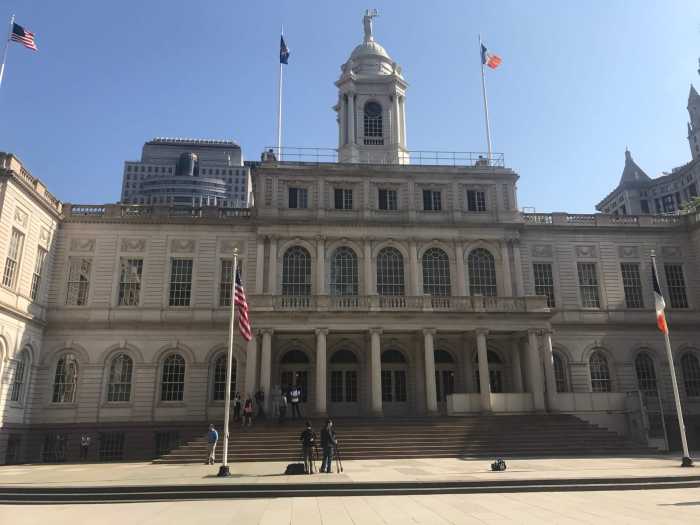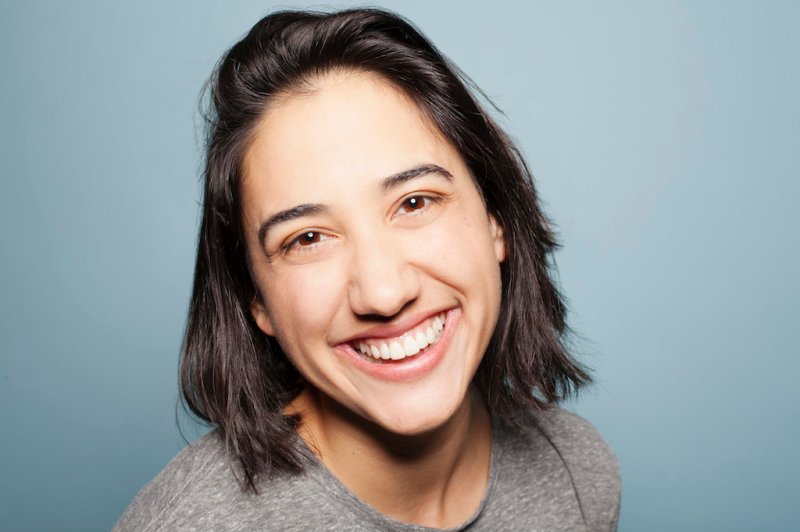Three-Term Leader Made Mark Locally
Brooklyn and Queens mourned the loss of former Mayor Edward I. Koch-the uniquely witty and charismatic leader of New York City for 12 years and helped rescue the Big Apple from the depths of economic despair in the late 1970s-who died early last Friday morning, Feb. 1, at the age of 88 after suffering congestive heart failure.

A giant in city politics for more than four decades, Koch became mayor in 1978 after representing areas of Manhattan in the House of Representatives and, prior to that, the City Council. He took office at perhaps the most challenging time New York City has ever faced, as the city teetered on the brink of bankruptcy and entire neighborhoods were devastated by urban decline.
To bring the city’s fiscal house in order, Koch made significant spending cuts and worked to attract new businesses to the city. At the same time, however, he supported efforts to revitalize blighted areas across the city which had suffered from years of decay and neglect, including Bushwick and the South Bronx.
In the years that followed, the city rebounded economically, and Koch-with a frank, man-of-thepeople governing style that combined humor, resiliency and outspokenness- became one of the most popular mayor’s in the city’s history. He was re-elected in 1981 and 1985 by more than a two-thirds majority; in the 1981 election, he became the first mayor to secure the nominations of both the Democratic and Republican parties.

For many New Yorkers, Koch seemed to be a natural for the job, and he became known around the country as the city’s most ardent ambassador. When meeting with constituents in a public setting, he was known to ask a question that would become his catchphrase: “How’m I doing?”
His popularity, however, waned during his third term amid scandal in several city agencies and racial tensions following high-profile bias crimes in Bensonhurst and Howard Beach. Koch’s bid for a fourth term was unsuccessful, as he lost the 1989 Democratic primary to David Dinkins, the then-Manhattan borough president who would go on to narrowly defeat then-U.S. Attorney (and a future mayor himself) Rudolph Giuliani in the general election.
But Koch did not fade from the spotlight in the years after leaving City Hall. He succeeded Judge Joseph Wapner on a reprised edition of The People’s Court in the 1990s, had cameos in films and television shows such as The First Wives Club and Sex and the City, hosted his own talk show on Bloomberg Radio, appeared as a pundit on NY1 News and even served as a pitchman for Snapple drinks.

The former mayor also became a noted writer, penning op-ed pieces and film reviews for daily publications as well as three non-fiction works, five novels and two children’s books.
All the while, Koch remained active in politics, and many candidates for public office valued his endorsement. A self-described moderate liberal, he wasn’t one to support candidates of a single party, as the former mayor frequently gave his nod to national and local candidates both Democratic and Republican.
Four years after endorsing Republican President George W. Bush for re-election, Koch supported Democrat Barack Obama in his successful 2008 presidential campaign. The former mayor backed Republican Bob Turner in the special September 2011 election for the Ninth Congressional District seat in Brooklyn and Queens, but endorsed Democrat Grace Meng for Congress in the all-Queens Sixth Congressional District last year.

In his final years, Koch founded a good government group known as “New York Uprising,” which sought ethical and legislative reforms in Albany. The campaign persuaded hundreds of candidates for public office across the Empire State in 2010 to sign on to the organization’s pledge to support changes that would make the state government more effective and responsible.
Koch received one of the highest honors a New Yorker could get, although the honor itself stirred controversy. The Queensboro Bridge was renamed the Ed Koch Queensboro Bridge in 2011, recognizing, in part, his efforts to rehabilitate the span during the 1980s.
While Koch embraced the tribute- in a humorous introductory video made for the 2012 State of the City address, he was shown shouting at passing vehicles, “Welcome to my bridge!”-the renaming did not sit well with Queens activists and elected officials, who argued that the renaming took away from the borough’s identity.
Koch had been battling a host of health issues over the last 25 years. In 1987, he suffered a mild stroke while in office but rebounded. Years later, he would suffer from various ailments of the heart, had a pacemaker installed and underwent bypass surgery.
In the weeks before his death, Koch had been hospitalized several times after developing anemia and, later, fluid in the lungs.
A bachelor, Koch is survived by his sister Pat. He was remembered at a memorial service on Monday morning, Feb. 4, at Temple Emanu- El in Manhattan, followed by interment at Trinity Church Cemetery at the plot he purchased several years ago.
His early years
Born in the Bronx in 1924 to two Polish immigrants, Louis and Joyce Koch, he spent his early years in Newark, N.J. before moving to Brooklyn.
He reportedly spent two years attending the City College of New York before being drafted into the Army, where he served as an infantryman between 1943 and 1946.
When he returned to New York, he enrolled in New York University’s law school, graduating in 1948 and passing the bar a year later.
In the 1950s, Koch became active in local Democratic politics, battling Greenwich Village politician Carmine DeSapio, a Tammany Hall Democrat.
In 1963, Koch defeated DeSapio for the Democratic District Leader position, and would defeat him again two years later. In 1966, he would win election to the City Council, and in 1968, would win election to the House of Representatives, where he would represent the east side of Manhattan until becoming mayor in 1977.
The 1977 race
In the middle of his fifth term in Congress, Koch threw his hat into the ring for the Democratic nomination for mayor in 1977 as one of six challenging incumbent Mayor Abe Beame. The field included then-Secretary of New York State Mario Cuomo and Rep. Bella Abzug.
At the time, New York City was on the verge of complete financial ruin, racked by a collapsed tax base and massive government spending which left the city in a staggering, multi-billion dollar deficit. Entire neighborhoods such as Bushwick were decaying due to plummeting real estate values and spikes in crime rates and arson.
The problems of Bushwick, ironically, came to light as a result of the blackout that took place in July 1977. Massive looting and riots, as well as large fires, broke out across the neighborhood after the lights went out. The “all hands fire” in Bushwick a week later-a 10-alarm inferno in which several city blocks burned to the ground-prompted calls for the city and mayoral candidates to take action.
Koch and Cuomo made visits to Bushwick and pledged to fulfill an action plan to revitalize the area. The two candidates were the top vote getters in the September primary, but neither got enough votes to win the nomination outright, thus forcing a runoff.
To describe the runoff as controversial might be something of an understatement. At the height of the campaign, signs were posted along Queens Boulevard which read “Vote for Cuomo, Not the Homo.” It was a reference to rumors about Koch, who-except for one radio interview in which he said he was heterosexual- never discussed his sexuality or his personal life.
Throughout his political career and afterward, Koch maintained that his personal life was “nobody’s business but mine,” as he wrote in a 1992 autobiography.
The incident strained the relationship between the two Democrats, who would eventually go on to lead New York City and State through much of the 1980s. Koch blamed the Cuomo campaign for the offensive signs, but Cuomo vehemently denied that he had anything to do with it.
In the end, Koch defeated Cuomo in the Democratic primary runoff, but Cuomo continued his mayoral campaign by running on the Liberal Party line. Koch would once again defeat Cuomo-as well as the Republican nominee, State Sen. Roy Goodman- in the November general election to become mayor.
Cuomo turned the tables on Koch in 1982, defeating the mayor in the Democratic gubernatorial primary; Cuomo would go on to serve three terms of his own in Albany. Pundits claimed that Koch cost himself votes in areas outside of New York City after making disparaging remarks about suburban life in an earlier interview with Playboy magazine.
Helping Bushwick bounce back
Upon taking the oath of office in January 1978, Koch worked not only to rein in the city’s finances, but to also rebuild financially and physically devastated communities such as Bushwick.
Mayor Koch supported the Bushwick Action Plan, which had been devised years earlier by the city Department of Housing Preservation and Development and Brooklyn Community Board 4 to revitalize homes and businesses in the neighborhood.
“Clearly the people of Bushwick should have a very warm place in their hearts for Mayor Koch,” John Dereszewski, who served as district manager of Board 4 from 1977 to 1979, told the Times Newsweekly, noting that Koch promised to support the area during the 1977 mayoral campaign and “was really true to his word.”
The Action Plan which was implemented after he took office resulted in the construction of the first phase of what is now known as Hope Gardens on a vacant plot of land, and provided funding for subsequent phases of development.
The city also seized and demolished abandoned homes, and both by itself and in partnership with other groups, helped create “housing in a way that would not distort the nature of the community,” according to Dereszewski.
Dereszewski also lauded Koch for running “by far the most sympathetic and most pro-community board administration,” noting that his backing helped community boards in their work with city agencies.
As an example, he noted that Board 4 had suggested constructing a station house for the 83rd Precinct on the site of a burned-out building on Knickerbocker Avenue, while the NYPD had sought a location near Flushing Avenue. With the Koch administration’s help, the community board was able to fight for the precinct’s headquarters to be built at its current location.
According to Dereszewski, the current revitalization of Bushwick had its roots in Koch’s work.
“I think it’s an important part of his legacy,” he noted.
‘Didn’t forget’ about Ridgewood
In addition to giving Bushwick a much-needed assist, Maureen Walthers, publisher of the Times Newsweekly/Ridgewood Times, remembered Koch for also maintaining strong ties to the Ridgewood community after campaigning there in 1977.
“Once he became mayor, he didn’t forget about us,” she said, noting that Koch regularly held town hall meetings at venues such as Grover Cleveland High School and attended the annual Oktoberfest fund-raisers held by the Greater Ridgewood Historical Society.
Koch seemed to be at his best during the town hall meetings, Walthers recalled. Commissioners from every major city agency were on hand- and put on the spot by their boss, the mayor-to answer to concerns and problems raised by those in attendance.
“He was a master at town hall meetings,” she said, noting that Koch would prepare for the hearings by talking with civic leaders and community activists about the pressing needs and matters in the area.
The mayor also served as a genie of sorts at the meetings, as he would give two audience members a chance to have their wishes granted, Walthers added. Whatever problem was raised by the two attendees- such as potholes on their block or a broken stoplight-Koch made sure that the problem was resolved immediately.
“Whatever the wish list was, he got it done,” Walthers said. “He made no false promises.”
Ted Renz, executive director of the Myrtle Avenue Business Improvement
District (BID), noted that Koch also played a supportive role in the foundation of the business organization. Koch was also on hand to rededicate the corner of Myrtle and St. Nicholas avenues as Det. Anthony Venditti Square in memory of the NYPD Organized Crime Control Bureau member who was gunned down at the location in 1986.
Rejuvenating the city
As for balancing the city’s budget, Koch worked during his first term on a number of measures designed to curb spending and raise revenue. At the same time, however, he also found ways to bring about muchneeded improvements to the city’s crumbling infrastructure.
There were moments, however, when Koch clashed with union leaders seeking increased funds for municipal workers. One such incident was a transit strike in 1980, in which Koch worked to reassure New Yorkers by standing at the foot of the Brooklyn Bridge to greet commuters as they made their long walk to work in Lower Manhattan.
Toward the end of Koch’s first term, the city found itself with a budget surplus after years of running annual deficits. New York City’s job sector boomed, as did real estate values and sales, translating into more tax revenue for the city government. This led Koch to restore some of the spending cuts which had previously been enacted by his administration.
As the city regained its financial footing in the 1980s, however, it continued to battle high rates of crime and homelessness, as well as the AIDS epidemic. Gay rights activists would criticize Koch for being slow to address the health crisis as it exploded across the city; the former mayor maintained for years afterward that the city did more for AIDS victims than San Francisco, which was considered to be where the outbreak began.
Still, Koch remained highly popular among New Yorkers until after he was elected to a third term. During the period between 1986 and 1989, a number of scandals broke out in city government involving a number of high-ranking officials with ties to Koch, including then-Queens Borough President Donald Manes, Democratic bosses Stanley Friedman and Meade Esposito, as well as the city’s Transportation Department and the Parking Violations Bureau.
Koch was never linked to any wrongdoing, but the scandals tarnished his reputation. The mayor was also hampered by racial tensions stemming from two high profile bias crimes: the 1986 Howard Beach assault of three black men by a gang of white teenagers, which resulted in the death of one of the victims, Michael Griffith; and the 1989 murder of Yusuf Hawkins, 16, in Bensonhurst, who was slain by a group of white teenagers.
Combined with a slumping city economy following the Stock Market Crash of October 1987, these factors spoiled Koch’s bid for a fourth term in 1989, with his primary loss to Dinkins.
Koch had stated on multiple occasions that he wished to be “mayor for life,” but his tenure at City Hall officially came to a close on Dec. 31, 1989.

